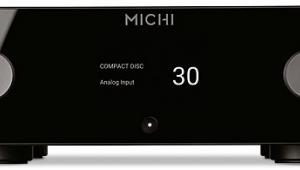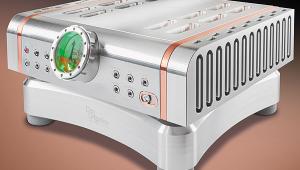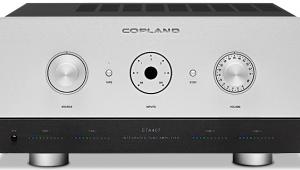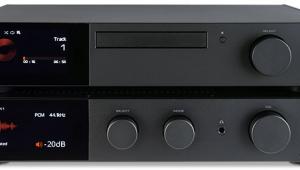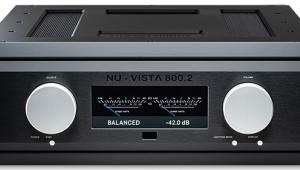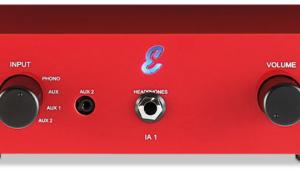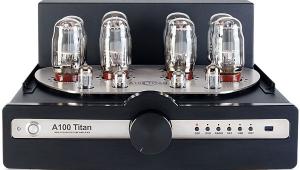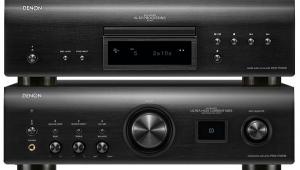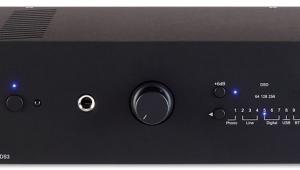Yamaha Dsp Z11 (£4999)
Yamaha’s Z11 is an amplifier of extremes. Almost every feature can be prefixed with terms like ‘most’, ‘advanced’ and ‘leading’ and the fit and finish is superb. The specification sheet is impressive and the features list is the size of the Encyclopaedia Britannica and reads like my very own wishlist of AV technology. The Z11 is right at the cutting edge of multichannel audio, HD video and multi-room technology and then goes on to incorporate a level of audiophile engineering that would compete favourably with high-end two-channel components. It is the product of four years’ R&D and the work of 40 of Yamaha’s top engineers. From this alone the £5000 price tag looks like a veritable bargain.
The name Z11 has significance as this is the world’s first 11.2 channel amplifier. Now this could be received in the same way one might view the announcement of the world’s first 11-wheel car – but there is method in this madness [see box]. In essence you have a normal 7.1-channel configuration with two additional stereo pairs placed high and wide, front and rear of the room, with one additional pair of speakers placed higher and wider than the main stereo pair. Without channelling walls this will create a Shelob-sized spider’s web of speaker cables guaranteed to ensnare you in the dark. You then require a second subwoofer, with ideal placement at the front of the room, wide left and wide right. Speaking from experience, this creates divorce-threatening levels of visual carnage.
NORWEGIAN INTERNET
There is a fine downloadable document of the full features list on Yamaha’s website but the key facts are plenty of power to the seven main channels, and 50 watts a piece to the additional four. You get upscaling of all video inputs to 1080p, four-zone multi-room, Ethernet networking and the deepest, multi-layered Graphic User Interface yet to grace a product that wasn’t a space shuttle. Without the instruction manual, you will be feeding 1080p video to a subwoofer in zone 4 while simultaneously streaming Norwegian internet radio to your DVD player in no time at all.
The 4-in 2-out HDMI connections are the 1.3a specification with support for deep colour and auto-lipsync, but it is under the hood that the Z11 is most exciting. The chassis itself uses an ultra-rigid Rahmen structure of H-shaped frames, which isolate various sections of the electronics and are positioned to cancel out micro-volt eddy currents that can circulate in the chassis. The power supply accounts for 10kg of the unit’s mass and major internal components include Anchor Bay video processing, Burr-Brown DSD1796 DACs and custom-made block capacitors. The ground plane for both the analogue and digital side is kept completely discrete in what Yamaha refers to as its Pure Ground DAC concept, and bitstream audio benefits from both a PPL circuit and a VCXO digital clock to reduce jitter, particularly over the HDMI connection.
Setup is allegedly automatic, using the supplied mic and its tri-pronged stand. However to benefit from the full parametric EQ system you’ll need to run the whole five-minute setup sequence 11 times with the mic in a different position every time. The EQ filtering is complex and can be tweaked by the user, but as this involves variable frequency, gain and Q over nine filters on all 11 channels plus the subs it’s not for the faint of heart.
MASTERING MULTICHANNEL
Key to the Z11’s abilities is its high-quality decoding of Dolby TrueHD and DTS-HD Master Audio signals. Now before you write these off as videocentric formats, don’t forget that both can offer SACD/DVD-A level resolution over eight channels and are widely adopted across the industry. The potential market for music-based HD discs with these sound formats is huge and could usher in a new era of higher-resolution hi-fi audio, pretty much by the back door.
MUSICAL POTENTIAL
The San Francisco Symphony recording of Aaron Copland’s Appalachian Spring on Dolby’s own TrueHD demo disc is proof positive that the format has musical potential. Yamaha’s rendition of this small orchestral work is alive with detail and the rich timbre of each instrument. The separation of individual notes across the violins is sublime allowing you to pinpoint the character of each instrument with startling ease. It offers a truly open and realistic sense of the concert without artificial top-end glare or overt LF boost.
The stage-central piano is firmly placed in the large soundstage and gels seamlessly with the performance. Each note has fast rise and mellow decay, and the very top notes are blissfully free of any brassy character. Similarly, the flute passage is sprightly and the fast staccato notes do not diminish the eerie hollow sound of the instrument. Switch to the Nine Inch Nails track on the same disc and the Yamaha finds itself equally at home with up-tempo rock. Gone is the dark and moody character of Yamaha amps of old and in its place is an altogether faster and more coherent presentation. For fans of the NIN musical genre you could level criticism that the Z11 could use more bass, but it represents a far more realistic balance for most music rather than a trouser-flapping effects.
However the absolute peach on the disc is the TrueHD recording of ‘They Can’t Take That Away from Me’ by Ramsey Lewis. The Z11 treats this jazz standard with rare grace, offering a gloriously rich brass section and crisply brushed snare that washes through the track. Her voice oozes out of the soundstage virtually dripping in warm honey to envelop you in the lyrics. The resolution at the very upper edges of her range lays waste to the majority of AV amps on the market and her natural sibilance is held in a delicate balance throughout. The size of the venue is precisely recreated through the ambience of the soundstage and, again, each of the individual facets of the mix gel neatly and naturally. With this new breed of high-resolution multichannel music recordings, the Z11 is difficult to fault and certainly at the very top of its game.
ALL ROUNDER
Just to prove that you can have your cake and eat it, True HD and DTS-HD movie soundtracks are just as jaw-dropping. The Blu-ray of Pirates of the Caribbean: Dead Man’s Chest is one of the first discs to use DTS-HD Master Audio and as soon as the Z11 flags up the format you get a sudden urge never to listen to standard Dolby or DTS ever again. Quite simply it is like going from standard- to high-definition video and is wholly addictive. Every creak of the ship and lap of water is accounted for with minute detail and immaculate positioning. The dialogue is the most natural I am yet to experience from any movie replay system and the overall balance is right down the middle.
This amp is all but unflappable and continues to impress with a wide genre of music and movie fodder. Perhaps, if you were on a wholesale diet of all-action blockbusters one could find the Z11 a little shy of low down clout. But the more you experience the tautness and control of this amp, the more other models sound overblown in the lower registers. Even with both subs active the Z11’s bass remains tight, poised and in harmony with the rest of the sound. Only with very high volumes did I feel a genuine need for a little more spleen-churning depth to the low-frequency effects.
SWANKY MODES
Of course this sort of desire can be assuaged by use of the Z11’s parametric EQ system, if you have the time, or indeed through engaging one of the many DSP modes that calls into play the other speakers. Unaccustomed as I am to implementing either ‘hi-fi voodoo’ technology, this is the first amplifier I have listened to where both systems have some merit at enhancing areas of the performance without implementing wholesale congestion across the audio band – a rare trick indeed.
The Enhanced Movie DSP modes use all eleven speakers and both subs and while the sound is no longer ‘purist’, the effect offers an incredible boost to both the dynamic scale and near-holographic imaging. The efficacy of this mode was proven some days after this review when I found myself covertly sneaking back to engage the DSP before watching a movie. Well, that’s my rep shot to bits then.
IN OTHER NEWS
To discuss the full depth and versatility of the Yamaha Z11 would take up most of this month’s issue but suffice to say the Anchor Bay video scaler is superb and day-to-day operation pretty easy – once you get used to it. The networking is plug and play simple, although Wi-Fi as opposed to wired would have been nice, and the vTuner internet radio database supports around 6000 stations – making DAB look a bit sorry for itself.
As the heart of a multi-room install the Z11 is as flexible as the genre gets outside of dedicated matrix AV switchers and is, of course, compatible with 12V triggers, RS232-based control devices, IR repeaters, Crestron, AMX etc, etc.
But the last and perhaps most important trick up the Z11’s ports is its Pure Direct mode. While many AV amps with this feature do offer some benefit in reducing digital malaise in the presence region, the Yamaha’s goes a step further. It turns a complex, multichannel behemoth into a high-quality stereo integrated amp at the flick of a switch. The natural, open character remains but yet another layer of mist is removed to reveal a performance that would compete favourably with integrated stereo amps in the £2000 category.
VERDICT
The Z11 might be complex and not inexpensive but the effort Yamaha has put into the design secures its position at the very top of the AV amplifier tree. It is potent, versatile, spectacularly well featured and offers true high-fidelity sound in both multichannel and Pure Direct stereo modes. The Yamaha Z11 is comprehensively the best all-round AV amplifier to date.
Originally published in the April 2008 issue






